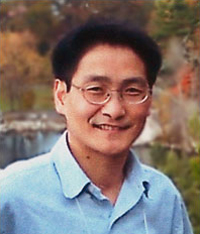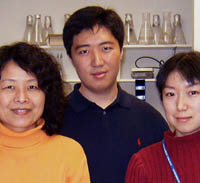| |
Did you know that in the U.S. over
700,000 people are sickened and over 200,000 of them die each
year from a disease called sepsis?
And sadly, a small portion of the people with sepsis actually
get the disease in the hospital, where they went to be treated
for another condition or ailment.
Sepsis occurs when bacteria enter
the blood stream, causing an infection and activating the immune system.
The infection then spreads, via the blood stream, throughout the entire
body. In extreme cases, the immune
system cannot stop such widespread
infection, but it can try nevertheless. After about 24 hours, the immune
system launches an all-out attack against the infection. In doing so,
it causes organ
failure and can kill you within two or three days.
It is very difficult to manage and prevent sepsis. Within 24 hours of contracting
an infection, it can spread throughout the body and induce the septic reaction.
The immune system is activated and the patient will get progressively worse before
doctors can determine that sepsis is the cause of the illness.
What causes the immune system to begin a suicide mission against the infection?
Dr. Haichao Wang of the Feinstein Institute for Medical Research has found one
answer to the question. In a previous study, Dr. Wang and his collaborators Dr.
Kevin J. Tracey and Dr. Andrew E. Sama identified a late proinflammatory
mediator
called High Mobility Group Box 1 or HMGB1 that
is responsible for the immune response. HMGB1 is a chemical found in white blood
cells that does not begin to act until 24 hours after the initial infection.
Dr. Wang identified this protein by conducting in in
vitro experiments. The researchers
incubated the white blood cells of mice in a culture dish along with a bacterial
toxin called lipopolysaccharide or LPS. (Note: remember LPS. It shows up below.)
At different time intervals (from 6 to 18 hours) after incubation, small amounts
of fluid were removed from the dish and analyzed for possible mediators. HMGB1
is one primary protein released by activated white blood cells.
To make sure this protein was specific for the bacterial toxin, Dr. Wang demonstrated
HMGB1 release only from the white blood cells of mice sensitive to LPS. The cells
of LPS-resistant mice did not produce HMGB1 in spite of stimulation with bacterial
toxin.
The next step was to determine if HMGB1 was released by mice in response to an
LPS challenge. To do this, the levels of HMGB1 protein were measured in mice
given bacterial endotoxin. The protein appears in the circulation 12 to 16 hours,
and peaks approximately 32-72 hours after LPS challenge, according to Dr. Wang.
HMGB1 has also been observed in human patients with sepsis, and significantly
elevated levels have been found in patients who died from severe sepsis.
The Good News
To find ways to combat HMGB1, Dr. Wang and his team immunized mice
with HMGB1 antibodies. If the HMBG1 antibodies could prevent an infection,
the animals would recover from the infection and have a better chance
of survival. Dr. Wang found that immunizing mice prevented the septic
reaction and a large number of animals survived.
But it is hard to produce HMGB1 antibodies, so Dr. Wang and his colleagues
went in search of a chemical that would inhibit the release of HMGB1 from
immune cells. This would allow doctors time to identify the infection and
destroy it with antibiotics.
The researchers turned to traditional Chinese herbal
medicine. They tested many chemicals found in more than two-dozen herbal
teas and medicines. To test each chemical, the scientists induced a bacterial
infection in mice and then watched to see if the characteristic septic reaction
took place. Dr. Wang found that the chemical in several medicinal herbs,
Danggui (Angelica sinensis), Danshen (Salvia
miltiorrhiza) and Green Tea
(Camellia sinensis), effectively inhibited HMGB1 so that the immune system
did not launch an overzealous attack against the infection and the mice survived
most of the time.
“This is a potentially very important finding,” said
Dr. Wang. “We’re looking at saving potentially 50,000 lives
a year in American hospitals.” There is still much more work ahead,
as the chemical enters pre-clinical trials in humans, but Dr. Wang is
optimistic. “Who knew,” said Dr. Wang, “that the tea
Eastern peoples have been drinking for thousands of years could be the
answer we were looking for.”
Dr. Wang recommends drinking green tea. “It may have other health effects,” says
Dr. Wang. He also explained that the dose of herb given to the mice is the equivalent
of drinking about 10 cups of green tea. Since green tea has caffeine in it, he
recommends drinking decaffeinated tea particularly for those people with kidney
or other health problems.
Dr. Haichao Wang is Director of the Laboratory of Emergency Medicine at the Feinstein
Institute for Medical Research and Chief of the Basic Science Research Program
at North Shore University Hospital, both in Manhasset, New York, as well as an
Associate Professor of Emergency Medicine at the New York University School of
Medicine in New York City. Dr. Wang received his Bachelor’s and Master’s
degrees in China and came to the United States 20 years ago to earn his Ph.D.
He was trained as a basic scientist in China and became interested in traditional
Chinese medicine when he moved to the US. |
|

Dr. Haichao Wang

Dr.
Wang's Research Team [enlarge]
Sign Up for our Monthly Announcement!
...or  subscribe to all of our stories! subscribe to all of our stories!

What A Year! is a project of the Massachusetts
Society for Medical Research.
|
|
| |
To Learn More:
- Chen, Xiaotian, Wei Li, and Haichao
Wang. "More tea for septic patients? --Green tea may
reduce endotoxin-induced release of high mobility group box
1 and other pro-inflammatory cytokines." Medical hypotheses
2006;66:660-663.
- Li, Wei, Jianhua Li, Mala Ashok, Rongquian
Wu, Dazhi Chen, et al. "A cardiovascular drug rescues
mice from lethal sepsis by selectively attenuating a late-acting
proinflammatory mediator, high mobility group box 1." Journal
of Immunology. 2007;178:3856-3864.
- Li, Wei, Mala Ashok, Jianhua Li, and
Huan Yang. "A major
ingredient of green tea rescues mice from lethal sepsis partly
by inhibiting HMGB1." Plos One. 2007;2:1-11.
- Wang, Haichao, Ona Bloom, Minghuang
Zhang, Jaideep Vishnubhakat, Michael Ombrellino, et al. "HMG-1
as a late mediator of endotoxin lethality in mice." Science
1999;285:248-251.
- Wang, Haichao, Wei Li, Jianhua Li,
Beatriz Rendon-Mitchell, Mahendar Ochani, et al. "The
aqueous extract of a popular herbal nutrient supplement,
Angelica sinensis, protects mice against lethal endotoxemia
and sepsis." Journal of Nutrition.
2006;136:360-365.
- Wang, Hong, Hong Liao, Mahendar Ochani,
Marilou Justiniani, Xinchun Lin, et al. "Cholinergic
agonists inhibit HMGB1 release and improve survival in experimental
sepsis." Nature
medicine. 2004;10:1216-1221.
For Information On Sepsis:
Rebecca Kranz with Andrea
Gwosdow, Ph.D. Gwosdow
Science Associates
HOME | ABOUT | ARCHIVES | TEACHERS | LINKS | CONTACT
All content on this site is © Massachusetts
Society for Medical Research or others. Please read our copyright
statement — it is important.
|
|
|
|

